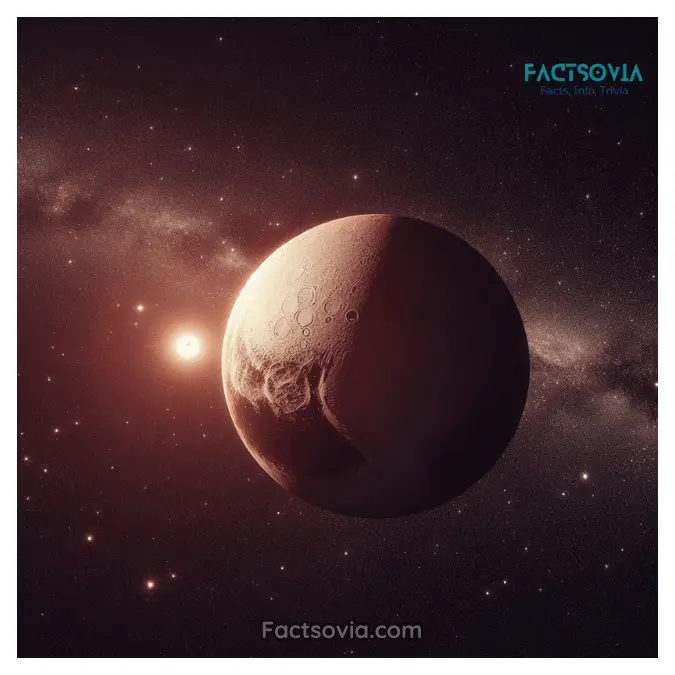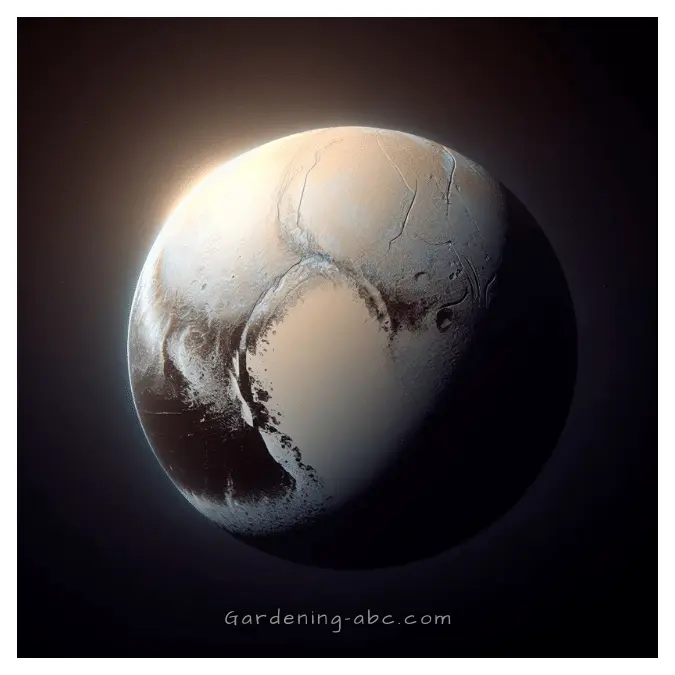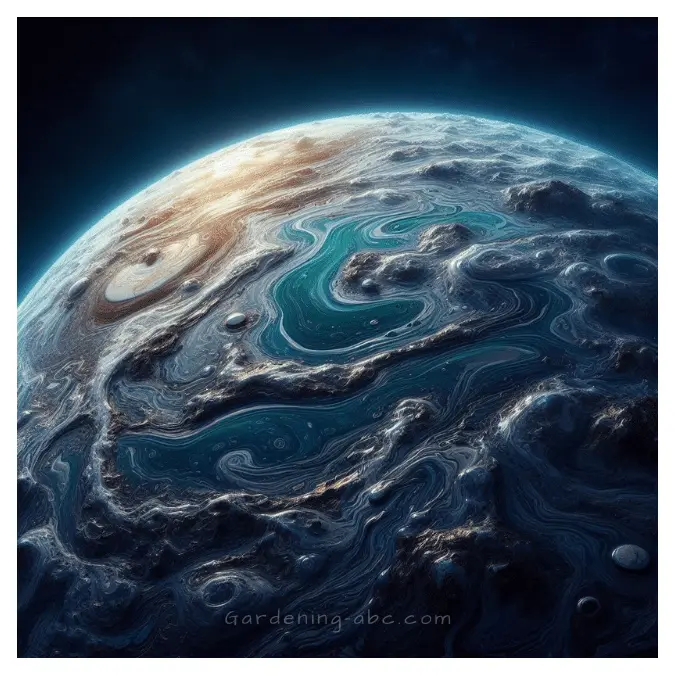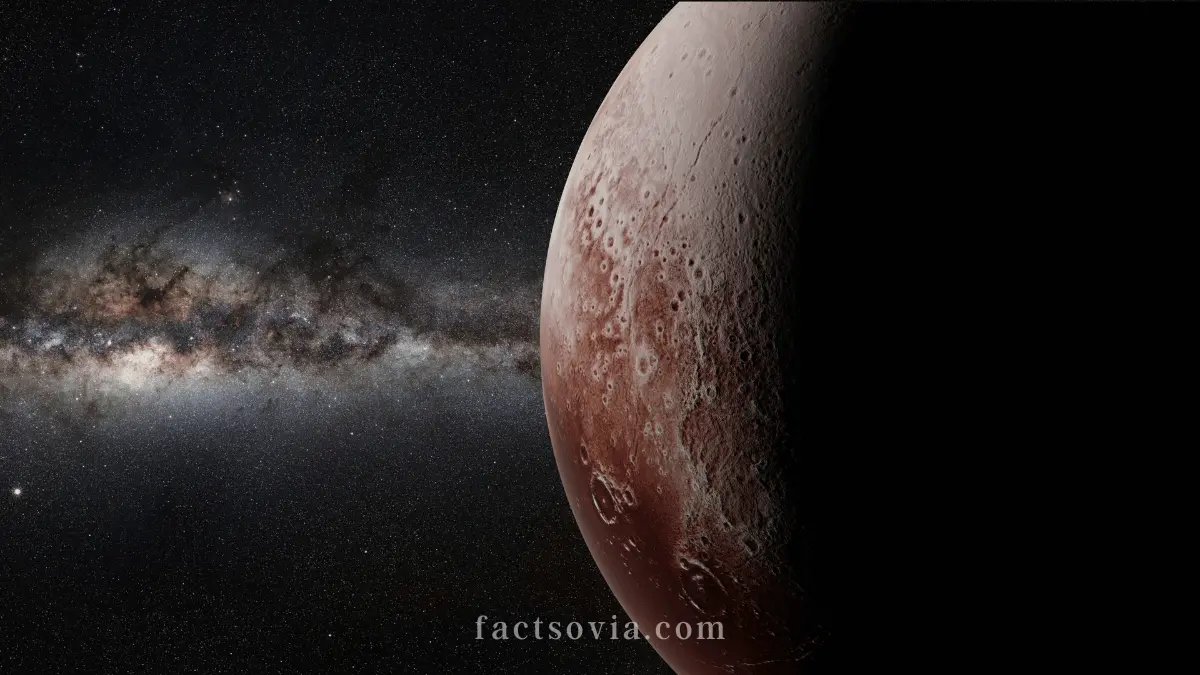We use affiliate links to run our site. When you buy through links on our site, we may earn an affiliate commission, without any added cost to you. Learn more
Have you ever wondered about Pluto, the little dwarf planet that’s so far away? It’s a mysterious world full of surprises, and I’m here to tell you all about it.
In this post, we’ll explore 10 fascinating facts about Pluto, from its accidental discovery to its hidden subsurface ocean. You’ll learn about its crazy weather, its tiny moons, and the possibility of life beneath its icy surface.
So get ready for a wild ride through the cosmos! Let’s discover the secrets of Pluto together.
Ten Fascinating Facts About Pluto
Pluto was discovered By Accident
Back in 1930, there was an astronomer named Clyde Tombaugh working at the Lowell Observatory in Arizona. He was hired to find a legendary planet called Planet X that some folks thought must exist beyond Neptune. Tombaugh was taking photos of the night sky when he stumbled across a tiny speck of light that seemed to move against the stars.
This turned out to be a new planet that eventually got named Pluto. Pretty wild that such an important discovery happened by chance, huh?
Pluto Used To Be a Planet, But Not No More

When Pluto was first found, astronomers called it the ninth planet from the Sun. But in 2006, a group of scientists changed its status to a “dwarf planet” instead.
This caused a big ruckus in the astronomy community. Many felt Pluto deserved to stay a full planet, but others agreed its small size made it different. This debate over Pluto’s planet status still gets folks riled up today. What do you think, planet or dwarf planet?
Pluto is Actually More Like a Giant Iceball
This little world is far off in the cold outer reaches of the solar system. Temperatures on Pluto can dip lower than -370 degrees Fahrenheit (-223 Celsius). Practically everything on it is made of ices like nitrogen, methane, and carbon monoxide.
There’s very little rock – it’s mostly dense water ice. So if you lived on Pluto, you’d be skating and sledding instead of strolling down the street!
You Could Bounce High on Pluto

Because Pluto is such a small globe, its gravity is much weaker than Earth’s. An average adult who weighs 150 pounds on Earth would only weigh 10 pounds on Pluto. And if you tried to jump, you could leap 50 feet in the air! Basketball games would get really interesting. Playing sports on Pluto would be wild.
Pluto Has Some Pretty Crazy Weather
Get this – when the sun rises on Pluto, it actually gets colder. This is because the sun’s light reflects off the icy surface and back into space. Pretty odd, right?
The little heat Pluto receives can cause exotic weather patterns like haze layers and fog. Changes in sunlight also create drastic swings in temperature during each day. Not exactly ideal conditions for a picnic!
You Can’t Find a Smooth Spot on Pluto’s Surface
If you got to walk on Pluto (without freezing solid!), you’d be in for a rough hike. Telescope images show the entire surface is wrinkled, pitted, and scarred with craters and trenches.
There are also mountains as high as 11,000 feet. Some areas look smooth at first glance, but close inspections reveal they are cluttered with tiny ice spikes and ridges. No rest for the weary in this restless world!
Pluto Has a Beating Heart

One of Pluto’s most curious features is a large bright plain shape like a heart. This area covers 1,000 miles wide and was named Tombaugh Regio. Scientists think the left half of the heart is a giant impact basin.
The right side beats to a different rhythm – it contains exotic ice formations pushed up from below. What a special place to symbolize Pluto’s complex geological rhythms!
Tiny Moons Dance Around Pluto
Pluto isn’t a lonely outpost – it has a family of five moons to keep it company. The largest is Charon, which has canyons deeper than the Earth’s Grand Canyon. Then comes Hydra and Nix, small icy bodies tumbling along together.
Styx and Kerberos are the littlest siblings, not much bigger than a football field. These moons formed from debris after a giant impact billions of years ago. Now they waltz around their parent planet in a graceful orbital dance.
A NASA Probe Visited Pluto in 2015
We didn’t get our first close-up look at Pluto until the New Horizons spacecraft flew past in July 2015. This piano-sized probe spent 10 years speeding across the solar system to reach Pluto.
As it zipped by, New Horizons snapped the first high-resolution photos and collected scientific measurements.
The images revealed a world more active than anyone expected. This historic flyby taught us more about Pluto in one day than we had learned in the previous 85 years since its discovery!
Pluto May Have a Liquid Ocean

New Horizons found that parts of Pluto wobble as they spin around. Scientists think this hints at an ocean buried 30 miles under the surface. They believe the ocean is probably a slushy mush of water and ammonia.
Its existence raises the possibility that primitive life might dwell in such a frigid, sunless environment. Could strange creatures swim in Pluto’s hidden depths? More study is needed to unravel this mystery!
Conclusion
Pluto is a truly amazing world, and we’ve only just begun to scratch the surface of its mysteries. With more research and exploration, we’re sure to learn even more about this fascinating dwarf planet.
So next time you’re gazing up at the stars, take a moment to think about Pluto. It’s a reminder that the universe is full of wonders, even in the farthest reaches of our solar system.
I hope you enjoyed this post about Pluto! If you did, please share it with your friends and family. And be sure to check out my other articles on this site to learn more about space science and other fascinating topics.
Amazon and the Amazon logo are trademarks of Amazon.com, Inc, or its affiliates.
